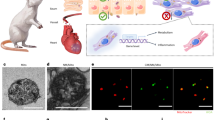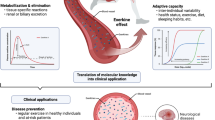Abstract
The human heart has a limited capacity for self-repair because, unlike most other cells, cardiomyocytes do not regenerate. Therefore, if a substantial number of myocytes is lost after a myocardial infarction, the performance of the heart may become severely limited, leading to a condition of heart failure. Recently, cell transplantation has emerged as a potential therapy for patients with end-stage heart failure. Of the various cell types being investigated for this purpose, skeletal myoblasts are an attractive option, because they are readily available from muscle biopsies and, if autologous cells are used, immunosuppression is not required and ethical issues are avoided. Several studies have shown that the cells can survive and differentiate after transplantation, and promising clinical results have been reported. However, effects of this therapy on left ventricular function remain largely unknown. In the present study, we investigated the long-term hemodynamic effects of intramyocardial injection of autologous skeletal myoblasts in patients with ischemic heart failure. Our findings indicate hemodynamic improvement after follow-up for up to 1 year, which is especially promising in view of the expected decline in left ventricular function in these patients.
This is a preview of subscription content, access via your institution
Access options
Subscribe to this journal
Receive 12 print issues and online access
$209.00 per year
only $17.42 per issue
Buy this article
- Purchase on Springer Link
- Instant access to full article PDF
Prices may be subject to local taxes which are calculated during checkout

Similar content being viewed by others
References
Tambara K et al. (2003) Transplanted skeletal myoblasts can fully replace the infarcted myocardium when they survive in the host in large numbers. Circulation 108 (Suppl 1): II259–II263
Taylor DA et al. (1998) Regenerating functional myocardium: improved performance after skeletal myoblast transplantation. Nat Med 4: 929–933
Jain M et al. (2001) Cell therapy attenuates deleterious ventricular remodeling and improves cardiac performance after myocardial infarction. Circulation 103: 1920–1927
Ghostine S et al. (2002) Long-term efficacy of myoblast transplantation on regional structure and function after myocardial infarction. Circulation 106 (Suppl 1): I131–I136
Thompson RB et al. (2003) Comparison of intracardiac cell transplantation: autologous skeletal myoblasts versus bone marrow cells. Circulation 108 (Suppl 1): II264–II271
Murtuza B et al. (2004) Transplantation of skeletal myoblasts secreting an IL-1 inhibitor modulates adverse remodeling in infarcted murine myocardium. Proc Natl Acad Sci USA 101: 4216–4221
Agbulut O et al. (2004) Comparison of human skeletal myoblasts and bone marrow-derived CD133+ progenitors for the repair of infarcted myocardium. J Am Coll Cardiol 44: 458–463
Quaini F et al. (2002) Chimerism of the transplanted heart. N Engl J Med 346: 5–15
Leobon B et al. (2003) Myoblasts transplanted into rat infarcted myocardium are functionally isolated from their host. Proc Natl Acad Sci USA 100: 7808–7811
Rubart M et al. (2004) Spontaneous and evoked intracellular calcium transients in donor-derived myocytes following intracardiac myoblast transplantation. J Clin Invest 114: 775–783
Hagège AA et al. (2001) Regeneration of the myocardium: a new role in the treatment of ischemic heart disease? Hypertension 38: 1413–1415
Pagani FD et al. (2003) Autologous skeletal myoblasts transplanted to ischemia-damaged myocardium in humans: histological analysis of cell survival and differentiation. J Am Coll Cardiol 41: 879–888
Smits PC et al. (2003) Catheter-based intramyocardial injection of autologous skeletal myoblasts as a primary treatment of ischemic heart failure: clinical experience with six-month follow-up. J Am Coll Cardiol 42: 2063–2069
Menasché P et al. (2003) Autologous skeletal myoblast transplantation for severe postinfarction left ventricular dysfunction. J Am Coll Cardiol 41: 1078–1083
Siminiak T et al. (2004) Autologous skeletal myoblast transplantation for the treatment of postinfarction myocardial injury: phase I clinical study with 12 months of follow-up. Am Heart J 148: 531–537
Makkar RR et al. (2003) Stem cell therapy for myocardial repair: is it arrhythmogenic? J Am Coll Cardiol 42: 2070–2072
Herreros J et al. (2003) Autologous intramyocardial injection of cultured skeletal muscle-derived stem cells in patients with non-acute myocardial infarction. Eur Heart J 24: 2012–2020
Criteria Committee of the New York Heart Association. (1994) Nomenclature and Criteria for Diagnosis of Diseases of the Heart and Great Vessels, edn 9, 253–256. Boston: Little, Brown.
Baan J et al. (1984) Continuous measurement of left ventricular volume in animals and humans by conductance catheter. Circulation 70: 812–823
Steendijk P et al. (2001) Hypertonic saline method accurately determines parallel conductance for dual-field conductance catheter. Am J Physiol Heart Circ Physiol 281: H755–H763
Kass DA et al. (1988) Use of a conductance (volume) catheter and transient inferior vena caval occlusion for rapid determination of pressure-volume relationships in man. Cathet Cardiovasc Diagn 15: 192–202
Steendijk P et al. (1998) Effects of critical coronary stenosis on global systolic left ventricular function quantified by pressure-volume relations during dobutamine stress in the canine heart. J Am Coll Cardiol 32: 816–826
Glower DD et al. (1985) Linearity of the Frank-Starling relationship in the intact heart: the concept of preload recruitable stroke work. Circulation 71: 994–1009
Little WC et al. (1989) Comparison of measures of left ventricular contractile performance derived from pressure-volume loops in conscious dogs. Circulation 80: 1378–1387
Menasché P (2004) Cellular transplantation: hurdles remaining before widespread clinical use. Curr Opin Cardiol 19: 154–161
Muller-Ehmsen J et al. (2002) Cellular cardiomyoplasty—a novel approach to treat heart disease. Congest Heart Fail 8: 220–227
Menasché P (2003) Skeletal muscle satellite cell transplantation. Cardiovasc Res 58: 351–357
Koh GY et al. (1993) Differentiation and long-term survival of C2C12 myoblast grafts in heart. J Clin Invest 92: 1548–1554
Hagège AA et al. (2003) Viability and differentiation of autologous skeletal myoblast grafts in ischaemic cardiomyopathy. Lancet 361: 491–492
Dowell JD et al. (2003) Myocyte and myogenic stem cell transplantation in the heart. Cardiovasc Res 58: 336–350
Menasché P (2005) Skeletal myoblast for cell therapy. Coron Artery Dis 16: 105–110
Chachques JC et al. (2004) Autologous human serum for cell culture avoids the implantation of cardioverter-defibrillators in cellular cardiomyoplasty. Int J Cardiol 95 (Suppl 1): S29–S33
Scorsin M et al. (2000) Comparison of the effects of fetal cardiomyocyte and skeletal myoblast transplantation on postinfarction left ventricular function. J Thorac Cardiovasc Surg 119: 1169–1175
Acknowledgements
The study was supported by Bioheart Inc., Weston, FL, USA.
Author information
Authors and Affiliations
Corresponding author
Ethics declarations
Competing interests
The authors declare no competing financial interests.
Rights and permissions
About this article
Cite this article
Steendijk, P., Smits, P., Valgimigli, M. et al. Intramyocardial injection of skeletal myoblasts: long-term follow-up with pressure–volume loops. Nat Rev Cardiol 3 (Suppl 1), S94–S100 (2006). https://doi.org/10.1038/ncpcardio0416
Received:
Accepted:
Issue Date:
DOI: https://doi.org/10.1038/ncpcardio0416
This article is cited by
-
Intramyocardial Navigation and Mapping for Stem Cell Delivery
Journal of Cardiovascular Translational Research (2010)



